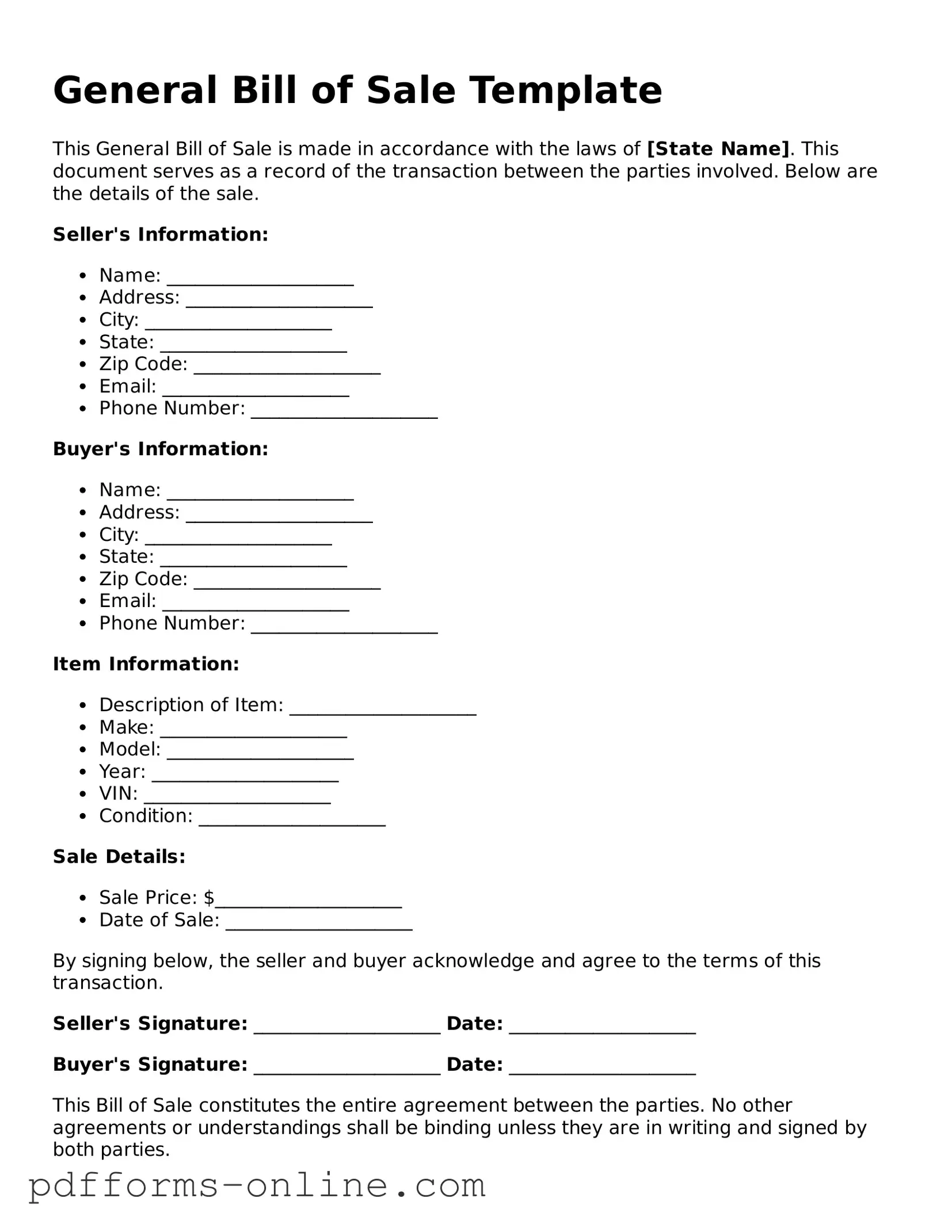A Vehicle Bill of Sale serves a similar purpose as a General Bill of Sale but is specifically tailored for the transfer of ownership of a vehicle. It includes details such as the vehicle identification number (VIN), make, model, year, and the sale price. This document protects both the buyer and seller by providing proof of the transaction and ensuring that the vehicle is free of liens or other claims.
A Personal Property Bill of Sale is used for the sale of personal items, such as furniture, electronics, or collectibles. Like the General Bill of Sale, it outlines the details of the transaction, including a description of the items sold, the sale price, and the names of the buyer and seller. This document helps establish ownership and can be useful for tax or insurance purposes.
An Equipment Bill of Sale is similar in nature but focuses on the transfer of ownership of equipment, often used in business transactions. This document details the type of equipment, its condition, and any warranties provided. It serves to protect both parties by documenting the sale and ensuring that the equipment is legally transferred.
A Firearm Bill of Sale is specifically designed for the sale of firearms. This document includes details about the firearm, such as make, model, and serial number, along with the buyer's and seller's information. It helps ensure compliance with local and federal laws regarding firearm sales and ownership transfer.
An Animal Bill of Sale is used when selling or transferring ownership of an animal, such as a horse or dog. It includes information about the animal, such as breed, age, and health status, along with the sale price. This document can help clarify the terms of the sale and protect both parties involved.
A Boat Bill of Sale is similar to the Vehicle Bill of Sale but is specifically for boats and watercraft. This document outlines the details of the boat, including its hull identification number (HIN), make, model, and sale price. It provides a record of the transaction and helps establish legal ownership.
A Mobile Home Bill of Sale is used for the sale of manufactured homes. This document includes specific details about the mobile home, such as its size, year, and VIN. It serves as proof of sale and can be important for registration and financing purposes.
A Business Bill of Sale is used when a business is sold. This document details the assets being transferred, such as inventory, equipment, and goodwill. It protects both the buyer and seller by clearly outlining what is included in the sale and the terms of the transaction.
A Lease Purchase Agreement combines elements of a lease and a bill of sale. It allows a buyer to lease an item with the option to purchase it at the end of the lease term. This document specifies the terms of the lease, the purchase price, and any conditions that must be met for the sale to occur.
A Real Estate Purchase Agreement is similar in function but focuses on the sale of real property. This document outlines the terms of the sale, including the purchase price, property description, and any contingencies. It serves as a legally binding agreement between the buyer and seller, ensuring that both parties understand their rights and obligations in the transaction.
